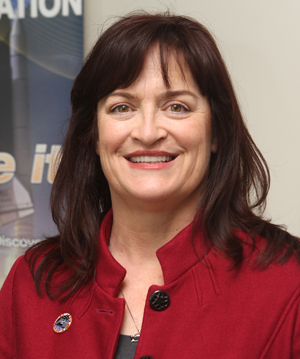Lifelong Passion
Educator's Pathway and Passion to Teaching Science
I have always wanted to be a teacher.
In the second grade, I gathered left over mimeographs of math facts and sentence structures from my teacher, Ms. Hinkle, and spent the summer drilling my friends in the backyard schoolhouse — built by my “papa.”
My mom wanted window planters and a china cabinet for an idyllic playhouse; I held out for student desks and a chalkboard.
By the time I was in high school, I fell in love with chemistry. What caught my attention was the end-of-year qualitative analysis with its mysterious “unknown” sample —15 milliliters of a pale violet solution. My assignment was to identify which of 10 possible cations, iron, lead (yes, lead) and even ammonium, were part of my unique unknown.
It also helped that in high school, I had great science teachers who inspired me through their love of their profession and engaged me in scientific inquiry in chemistry and biology. Through their instruction, I learned chemistry — and I loved chemistry so much that I committed to a major in chemistry in college. Ultimately, I ended up becoming a high school chemistry teacher.
There is, of course, much more to my story, but the point is that there were some steps on my journey to science career in teaching science — a “roadmap,” which is how I believe we should recruit science and STEM teachers.
So, why did I become a science teacher?
First, as a young child, I had a life-changing experience — I taught someone something. I was “involved.” Although not every neighborhood child wanted to be in my classroom, those who did enjoyed the math drills and sentence structure practice. That feeling of success — when the light, or “ah-ha” moment goes on with your student and he or she “gets it”— was a great motivation for becoming a teacher.
Second, I had a hot date with science. I remember those three weeks of qualitative analysis like some folks remember their first love. In high school, I was hooked on chemistry; on the unknown, on “inquiry.”
Third, someone taught me something about science — and about teaching science, although the latter learning was indirect. They modeled good teaching and instilled in me effective teaching techniques and positive feelings about the profession. There was a good deal of good instruction going on, and it made a big difference in my future career. I was “inspired.”
Finally, though not at all minimal, there were folks who gave me the “information” about what I needed to set goals and reach them. How do I get to college? What can I do as a science major? What does it take to become a teacher?
I received the “basic information” — through multiple means, at multiple times, and in multiple forms — at the right time. I can’t emphasize enough how important that was for me as a first generation college student.
And so I became a high school chemistry teacher. Teaching high school chemistry is an incredible experience — after all, chemistry is the central science, with ties to every area of human endeavor!
After three years of teaching in a small Texas town, I moved on to Cal State Fullerton where I earned my master’s in teaching science in 1986. I had also joined the Department of Chemistry as a part-time instructor, teaching chemistry to non-science majors, and eventually came to the conclusion that I wanted to work with future science teachers. Earning a doctorate in curriculum and instruction at the University of California, Riverside, led me on a path of teaching in the Department of Secondary Education for 15 years. And now, here I am, 30 years later, providing leadership in a program that contributed to my evolution as a science educator.
Costa is Cal State Fullerton’s director of science education, which prepares students who are competent in subject matter content to teach science at the elementary and secondary levels. She also is a professor of secondary education and a former chair of secondary education. Costa presented “Roadmap of STEM Teacher Recruitment and Preparation” at the Feb. 14 “California State University Summit: Transformative Change in the Preparation of Teachers” in Irvine. The math and science focus reflects Cal State Fullerton’s heightened emphasis on increasing student interest in the STEM fields — one of the university’s initiatives for 2010-11.
Feb. 17, 2011
 Victoria B. Costa
Victoria B. Costa